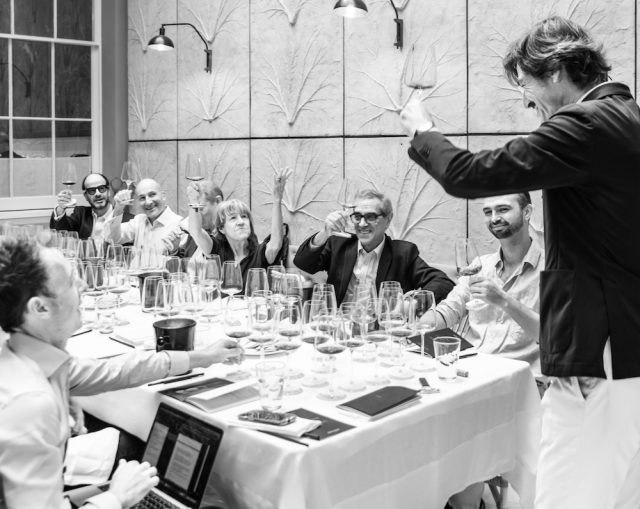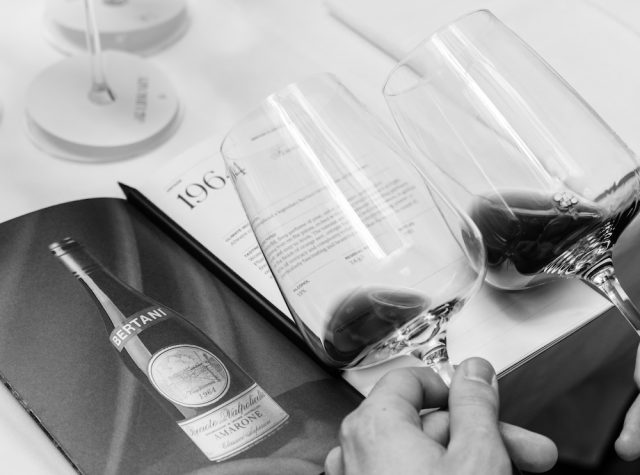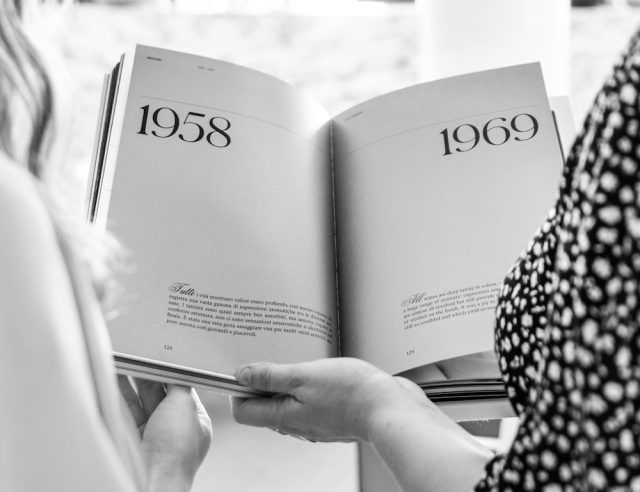Bertani: a masterclass on the Valpolicella producer
A masterclass dedicated to renowned Valpolicella producer Bertani demonstrated why this winery is a beacon of Amarone excellence.

In a world where the modern and hi-tech garners so much of the media’s attention, it’s rare for the existing and traditional to be the source of revelations. But that was the case for the wine press, along with drinks buyers and sommeliers, at a special event held last month in London.
Armed with a set of bottles spanning six decades of winemaking in Valpolicella, Italy’s newest Master of Wine, Andrea Lonardi, shone a light on the remarkable nature of a longstanding Amarone maker with a difference – a brand and business called Bertani. Eye-opening for the attendees was the approach of this producer, which was unconventional, not because it was cutting-edge, but classical. Indeed, as Lonardi pointed out, Bertani stands apart from its peers today because it failed to move with the times, which veered towards richer, sweeter wines in the 1990s.
As a result, it stands as a beacon for the great Amarone of the past, a style that’s distinctly, and deliciously, old-school. It’s also one that’s rarely seen outside Italy – Bertani is mostly consumed in its domestic market, where the wine is cherished by a loyal and local community of drinkers who appreciate the chance to sip an Amarone of the past.
But, thanks to Lonardi, Bertani is poised to grow in international fame – with expanding awareness hinging not on changes in the cellar, but sharing great bottles with new audiences. For such people, this winery’s style is a wonderful surprise: Amarone with an unexpected freshness when young, and an extraordinary energy when old. And it’s the latter that Bertani is able to prove with particular efficacy, thanks to a formidable wine archive called The Library.
Stock replenished
Indeed, it was this collection that was the reason for Lonardi’s visit to the UK. He explained: “Last year we released a book documenting all the vintages we’ve produced,” adding, “and they are all still available for sale.” That’s because Bertani has one of the largest wine collections in the world, with as many as 250,000 bottles of Amarone della Valpolicella Classico housed at its winery. Importantly, the producer keeps this stock replenished, putting aside 10,000 bottles of each vintage’s 60,000-bottle production – a stock that it won’t start selling until it’s at least 10 years old. “We want to maintain the level of our library,” said Lonardi, referring to an approach that may tie up cash, but also provides wine lovers with access to mature Amarone in perfect condition, direct from the winery.
However, the number of bottles isn’t the only impressive element of The Library; it’s the range of vintages available, which span six decades, with the oldest bottles dating from 1958. Such stock is partly related to Bertani’s dedication to past approaches, explained Lonardi. “Since the beginning, Bertani has kept very traditional in style, and we have incredible bottles in the cellar, because we never accepted a move to a modern, contemporary style of wine.” By this Lonardi means a shift to alcoholic, powerful Amarone with “some sweetness”, with Bertani choosing to keep its wines “bone-dry”, and rarely above 15% ABV.
This has meant, for example, that Bertani never developed a following in successful markets for Amarone, such as Scandinavia or Canada, “which were looking for juicy, sweetie, full-bodied types of wine”. It also ensured that Amarone from Bertani can “appear strange” to some people, according to Lonardi, while making the wines – which are created by drying the grapes after harvesting – “very drinkable”.
Continuing, he described the Amarone of Bertani as “expressing the soul” of great Italian wines, alongside Barolo and Brunello. Such a character he called ‘Italianity’, which he said had three layers that relate to the dominant grape variety of each of these famous regions which, in the case of Amarone della Valpolicella Classico, is Corvina.
“The first is the colour; it is a ruby type of wine: Corvina [which is used for Amarone], Sangiovese [Brunello] and Nebbiolo [Barolo] are all pale in colour, close to Pinot Noir or Grenache,” he began.
“The second is the nose, which has a combination of amaro characters and Alpine herbs, with Brunello and Barolo having more orange peel,” he continued.
“The third is the energy in the glass, which is a combination of high acidity and tannins: all three grapes can have a lot of energy, even if they are low in colour,” he added.
Then there is the specific terroir of Valpolicella, which gives a further stamp on Bertani’s Amarone. “There is incredible soil in Valpolicella, which is rich in limestone, and that gives a special mouthfeel to the wine and a saline character,” said Lonardi.
But there’s also volcanic bedrock, which Bertani chooses for its Amarone vineyards, largely “because it gives a smoky note on the nose and finesse to the palate”.
On top of the Italianity of Corvina and terroir of Valpolicella is a further aspect to Bertani’s distinctive style, which Lonardi termed “interpretation”. From Bertani’s founders to its ownership since 2011 by the Angelini family, the guardians of this business have always understood that its Amarone are produced in a “classical way”, said Lonardi.
Looking at this aspect in more detail, he stressed the role of Valpolicella’s best grape. “We are focused on Corvina, and we never use Corvinone, which is very spicy, with pyrazines that don’t fit with the elegance and finesse we have in the style,” he said.
Then there’s the drying process, called messa a riposo, required by law to make Amarone, which concentrates the flavours and sugars in the grapes as they slowly turn to raisins. “We never dry by machine. We dry the grapes on bamboo canes in the natural way,” Lonardi said, before pointing out that employing artificial means would alter the impact of different climatic conditions on this process.
Partner Content

“The weather during the drying process is very important for the style of the wine, and we want to communicate the vintage: for example, 2013 was not an exceptional growing season, but the conditions were very good during the drying process.”
He also noted that he would like to see a change to the rules on drying times for Amarone to less than two months in a bid to make lighter wines. “The grapes we harvest today are much riper than they were 30-40 years ago, so we don’t need to concentrate them so much, and our research has shown that the highest concentration of flavours comes when we reduce the weight of the berries by 20%, when normally the grapes are crushed when the weight has fallen by 30%,” he explained.
In terms of winemaking at Bertani, Lonardi picked out a few points of difference, including a “very long maceration” after fermentation (25-30 days at 25oC to soften the tannins), and no malolactic conversion, which is prevented “to keep the purity of the fresh cherry flavours”, and avoid a “yoghurt-like lactic character on the nose”.
While the fermentation is done in stainless steel vats, the ageing is made in cement tanks and wood, with the wine spending as much as eight years in 80-hectolitre Slavonian oak vessels on its lees without racking. Finally, when the wine is ready for bottling, it undergoes a one-micron filtration as a safeguard and quality check, but no stabilisation or clarification.
Once bottled, the wine then rests for a further year in Bertani’s cellars, before a proportion of the wines are released – while around 5% of production is kept for extended ageing in Bertani’s cellars, at a temperature of about 10oC. Lonardi describes the process as combining oxidative and reductive at the same time, with the latter coming from the oxygen-scavenging lees, and the former from the porous oak staves.
The wines, as a result of this and their naturally low pH – which is around 3.1 to 3.3 – “age exceptionally well in bottle”; a statement proven by a vertical tasting back to 1964, but also by the first wine tasted: the latest release, hailing from 2013. With its pretty cherry aromas, blood orange and rose-petal characters and salty-fresh, bone-dry finish, it showed little evidence of being 10 years old. Nor was it like a stereotypical Amarone, with its mix of chocolate and raisin scents, powerful, dried fruit flavours, slight sweetness, and warming alcohol.
As Lonardi said of the 2013: “It shows the purity and energy we have.”
Traditional appeal

Speaking more generally about Bertani, which he joined in 2011, Lonardi said that the brand reminded him of Viña Tondonia in Spain with its traditional appeal, and recorded how visiting the Amarone maker for the first time provoked “a special emotion inside me”.
Keen to take on the task of helping to promote Bertani more widely, while giving more precision to the wines, he said he had always hoped that the Bertani style would come back into fashion, commenting: “Sweet Amarone is not the future of the region.”
As he said: “This appellation can express this bone-dry style of wine that is very approachable – even at 15% ABV, which is an alcohol level that you now find in many places around the world.”
Although he admitted that Bertani Amarone are “not very commercial wines”, and “more a niche for the curious consumer”, he added: “But when you taste them, you fall in love with their energy.”
Concluding and explaining his desire to present the wines to drinkers in a range of countries, he said: “I feel that this brand has an identity that needs to be shared.” Finally, for Lonardi, the timing is right. Not only has the winery been revived with investment from the Angelini family, but the call for fresher, lighter reds is on the rise.
“We are seeing a comeback of the Bertani style,” he said, with satisfaction.

Related news
The timeless charm behind Rioja’s Monte Real
IGP Méditerranée: the one-stop shop for festive wine
Pata Negra Fauna range reveals the characters of Spanish terroirs




